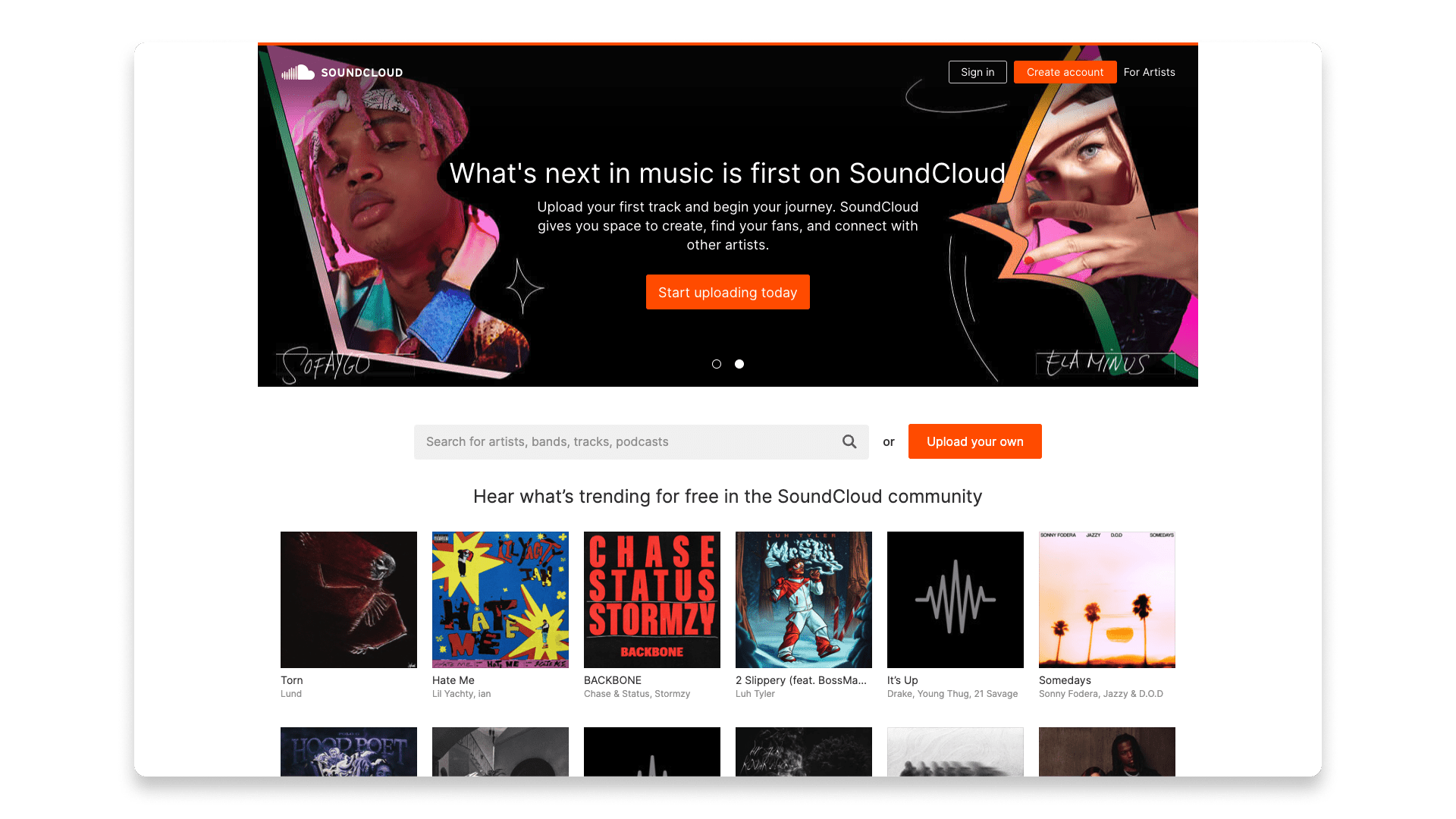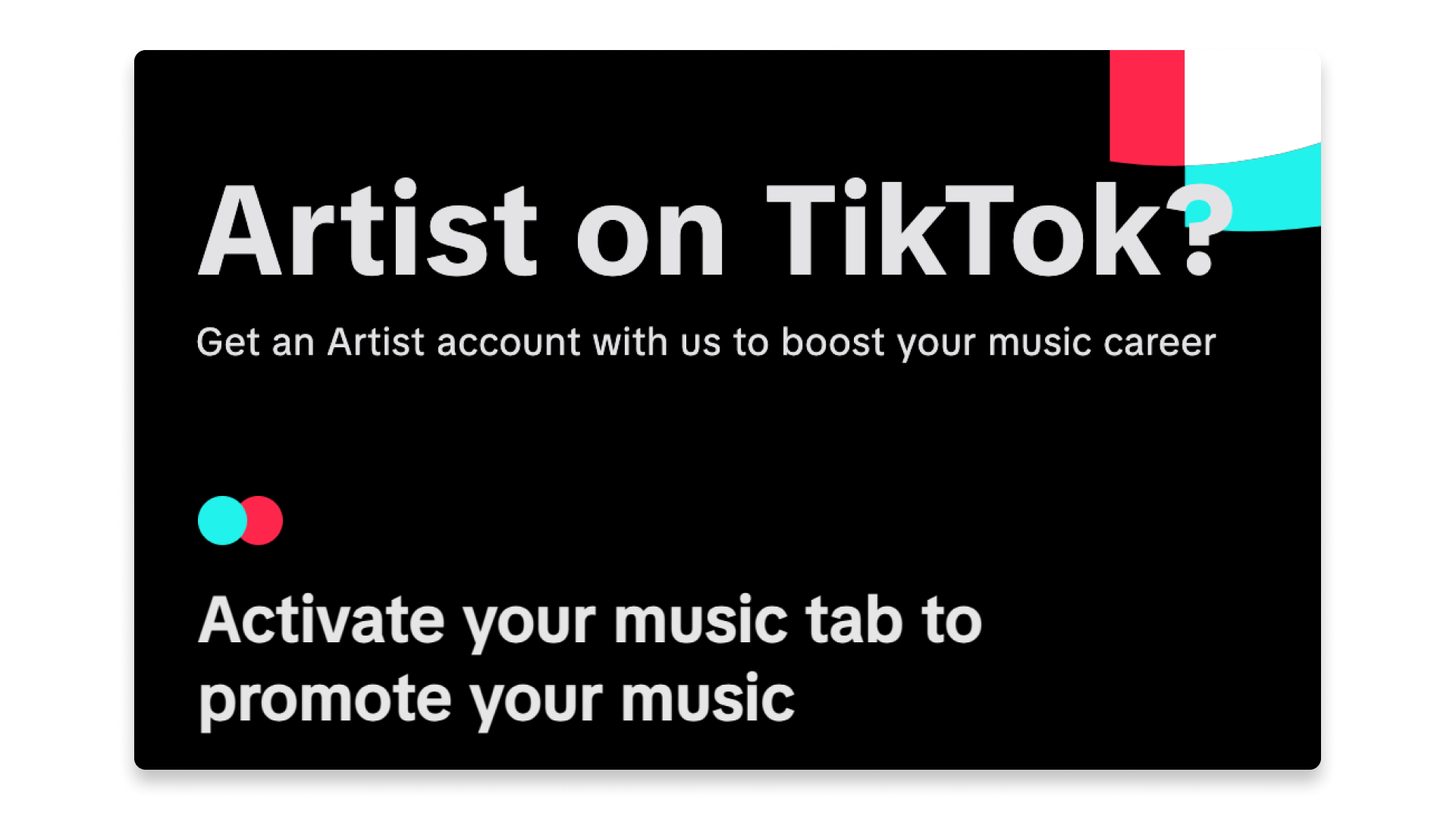
Where to Upload and Share Your Music?

Knowing where to upload and share your music is a key step in building your audience.
But, let’s be honest, there are a lot of platforms out there today. If you’re just starting out, it can be tricky to know which ones you should prioritize.
Let’s run through the most important ones so that you know where to start and how to get your music heard.
Spotify

As you’re probably well aware, this is where millions of people listen to and discover music every day (and you’re likely one of them).
If your goal is to gain new listeners and build momentum as an artist, Spotify should of course be a major area of focus.
The only way to upload your music to Spotify yourself is to release it through a distributor.
LANDR Distribution, for instance, can get your music on 150+ music platforms including Spotify and Apple Music.
Once you sign up for a distribution plan (pricing will vary depending on the distributor), uploading and scheduling a release is usually a simple process.
After you submit your release through your distributor of choice, you can claim your profile on Spotify for Artists.
This gives you control over your presence on the platform and access to analytics about your release and your listeners.
On average, Spotify pays artists about $0.003 to $0.004 per stream.
Since Spotify is a streaming platform, however, it’s not designed for quickly uploading and sharing music privately or just among friends.
There are other options you can use for those scenarios.
SoundCloud

The “check out my SoundCloud” jokes are a cliché for a reason — SoundCloud is one of the most popular sites in the world for sharing your music with others.
While it can function similarly to a full-on streaming service like Spotify (via the SoundCloud Go+ subscription for listeners), this isn’t its strength or its main offering.
It’s more like a portfolio for musicians who want to showcase their latest work, upload previews for upcoming releases, or post sketches and unreleased versions of their material.
Uploading your music on SoundCloud is as easy as starting a free account (limited to 3 total hours of uploads) and following the upload flow from the top right of your toolbar.
You can also keep uploads private and share private links if you want to share material without posting it publicly.
Uploading and processing usually finishes within a few minutes.
SoundCloud does offer ways for artists to monetize their music, but in our experience, it’s better to focus on other platforms for earning money.
Bandcamp

Bandcamp is notable as the leading platform for selling your music (and merch) directly to your listeners.
Having an account is free, and you’ll take home about 80-85% of each purchase (this is after Bandcamp’s cut and merchant transaction fees).
Unlike SoundCloud, it’s more of a marketplace than a service for simply uploading and sharing your music.
And unlike Spotify, it’s focused on music purchases rather than streaming (listeners do, however, get unlimited streaming of their purchases via the Bandcamp app).
While your music may be more likely to reach a larger number of listeners on Spotify, your fanbase on Bandcamp could be more loyal.
You could, of course, release your music both to Spotify through a distributor and directly on Bandcamp. There may be many listeners who use one platform and not the other.
Or, at the very least, you could use Bandcamp to sell your merch and physical releases while putting out your digital releases through your distributor.
YouTube

The first thing to note about YouTube is that it’s a very multi-faceted platform. You can use it in a variety of ways depending on your needs and goals.
You could, for instance, use it as a kind of music portfolio like SoundCloud.
This would involve creating a regular YouTube account, uploading selections of your music with the artworks as your visual elements, and using these uploads for promotional purposes.
Or, since it’s also a music streaming platform, you could release your music to YouTube through a distributor.
In our opinion, this is the optimal way to upload and share your music with YouTube.
It will allow you to have an Official Artist Channel on YouTube, which centralizes your presence as an artist as a platform.
You can then earn royalties from streams of your songs on YouTube Music and monetize your music through YouTube Content ID.
And of course, for bonus points, you can also post video content related to your music to help promote yourself as an artist.
TikTok

Music and dance have been core aspects of TikTok for most of its history, so it’s no surprise that it has a great feature set for artists.
Like streaming services, however, you can’t upload and share your music directly to TikTok from your phone (unless you edit a video that has your music baked in).
Instead, you can have your music added to TikTok’s audio library through a distributor.
The process for this is the same as Spotify and YouTube, since most distributors will release to all major platforms simultaneously.
The main thing to remember is that you’ll often need to specify a section of each song you release that will serve as the TikTok “sound” in their audio library.
Considering the fact that TikTok has over 1 billion monthly active users, sharing your music with the world through this platform can be a pretty good idea.
And since you can’t directly upload audio files to the app when recording a video, having your music in the audio library is essential if you want to promote your music on the platform.
Once your music is in the audio library, you can create a dedicated artist account and claim your artist name.
This will allow you to have a dedicated tab on your TikTok profile that showcases your music, among other useful features.
On top of this, releasing to TikTok’s audio library through a distributor allows you to monetize it through the platform — you’ll earn royalties when people use your music in their videos.
To go more in-depth about promoting your music on TikTok, check out this article.

Similarly to TikTok, Instagram doesn’t allow you to directly upload and share your music from your device (again, unless you pre-edit a video that contains the audio).
However, also like TikTok, Instagram has an audio library that you can get your music into by releasing with a good distributor.
This makes it easy to add snippets of your music video and image content that you upload, which is a great way to promote your music on the platform.
One key point of difference between Instagram and TikTok is that Instagram doesn’t have as many musician-specific features.
But considering its prominence and massive reach as a social media platform, having a presence for your music there is key to building an audience.
We’ve also written an in-depth guide to promoting your music on Instagram that you can check out here.
LANDR Network

It’s important to have a place where you can show off your work, get paid gigs, and establish new connections.
This is why we created LANDR Network, and it’s become a huge community for musicians and music professionals of all different kinds.
One of the more underrated features of LANDR Network is profile demos.
With this, you can upload and share your music in a dedicated “demos” tab on your LANDR Network profile.
It allows you to show off your previous work in the same place where you’re listing your expertise and presenting yourself as an artist.
It’s especially useful if you want to make money as a beat maker, session musician, mixing engineer, or any other music profession that’s relevant to your skills.
It’s free to have a LANDR Network profile, so we highly recommend setting one up. You can find detailed info in the FAQ.
Just be sure that you have the rights to upload the material that you want to use for your demos.
Nina Protocol

If you’re the kind of person who’s curious about innovative alternatives to major online music platforms, you might want to look into Nina Protocol.
Similarly to Bandcamp, it works as a marketplace where artists can sell their music directly to listeners.
Also like Bandcamp, it features extensive editorial sections with great music journalism, op eds, curated selections, and more.
What’s unique about Nina is that it’s blockchain-based, does not take a cut of your sales, and does not have a subscription fee.
You need a Solana wallet to earn money from your releases, but the developers have set up a simplified way to do this using only your email address.
So, while the setup for an account may be different from major platforms (and your audience reach may be smaller), it’s well worth checking out.
We recommend taking a look at their site, learning about the platform, and checking out the kind of music that is often released there.
It might be a great fit if you’re going for audience specificity and quality over quantity.
Subvert

Last but not least, we have a platform for uploading and sharing your music that actually hasn’t launched yet.
So far, all that is known about Subvert is that it aims to be a collectively-owned marketplace for selling digital and physical music goods directly to fans.
This means that artists would have more control and input when it comes to how the platform works and what decisions are made for its future.
As of writing, a countdown on the page indicates that they’ll be launching in late September 2024, and you can sign up for their mailing list if you want to be involved.
Until then, we don’t have much to go on. But it has certainly piqued our curiosity.
Gear guides, tips, tutorials, inspiration and more—delivered weekly.
Keep up with the LANDR Blog.












